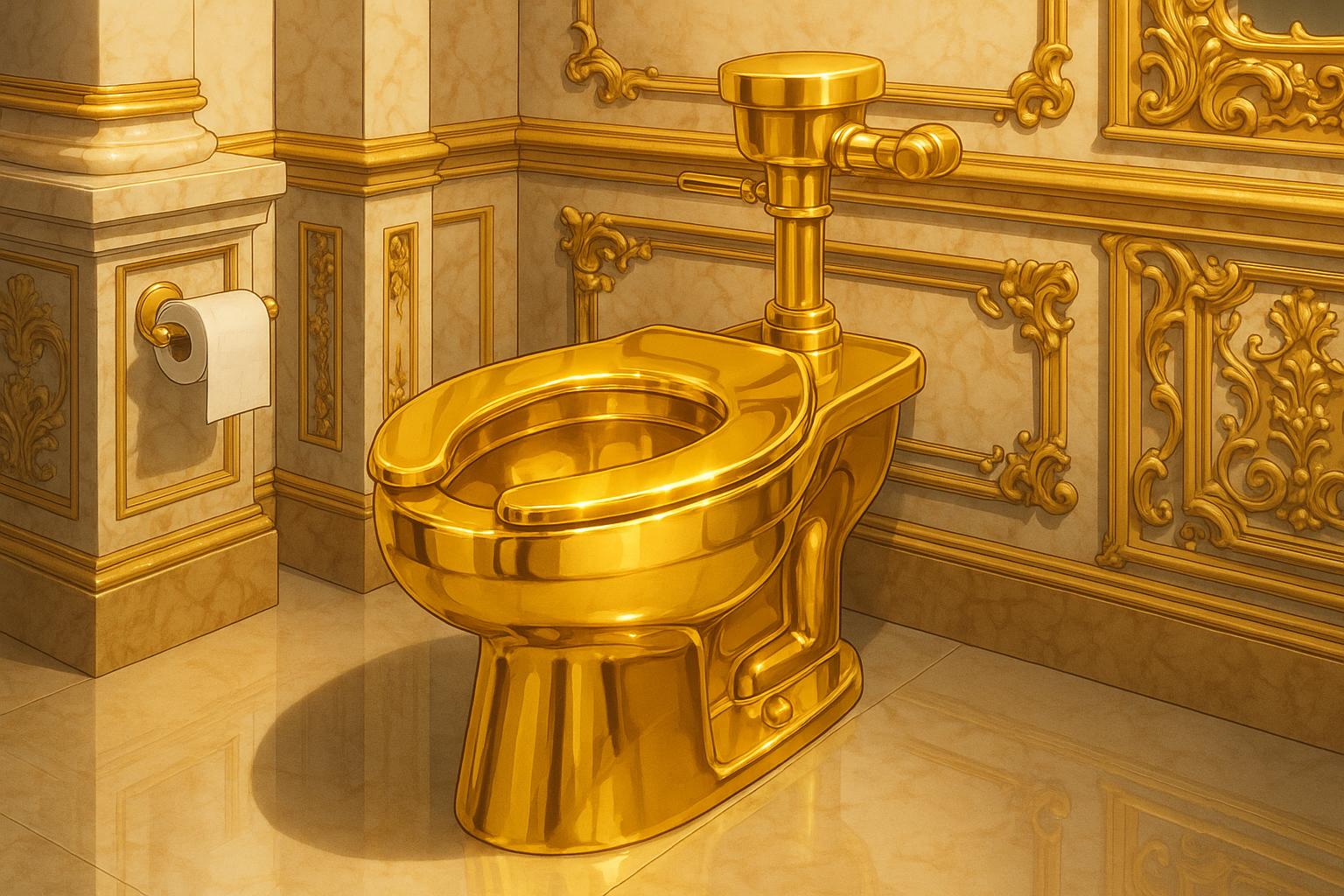The suspended 21-month sentence of Fred Doe, convicted for attempting to sell the stolen £4.8 million golden toilet from Blenheim Palace, has drawn sharp criticism from art theft experts who say it undermines justice and public trust.
The recent sentencing of Fred Doe, son of a multimillionaire caravan magnate, has sparked controversy and outrage stemming from his involvement in the audacious theft of an 18-carat golden toilet valued at £4.8 million. This unusual case, which captivated both the UK and international media, centered around the heist at Blenheim Palace, the birthplace of Winston Churchill, in 2019. Doe’s conviction for attempting to broker the sale of the stolen gold has led to severe criticism, particularly from experts in art theft recovery.
Christopher A. Marinello, a leading authority on recovering stolen artworks, described the situation as "laughable" on the Mail's podcast, "The Trial." He remarked that Doe’s 21-month prison sentence was inexplicably suspended for two years by Judge Ian Pringle KC, who cited personal circumstances, including Doe's wife’s poor health and the wellbeing of his children. Marinello argued that such leniency sends a dangerous message: "The award of a suspended sentence shows crime does pay in the UK."
At the heart of the case is the artistry behind the golden toilet, aptly named "America" and created by the Italian artist Maurizio Cattelan, which was designed to be functional and part of an exhibition at Blenheim Palace. The theft occurred in the early hours of September 14, just two days after the piece was installed for public viewing. CCTV footage revealed a group of men violently breaking in, using sledgehammers to smash a window and dismantle the toilet from its plumbing in less than five minutes, leaving behind substantial damage, including flooding.
With Doe's conviction, the narrative also highlights the broader implications of art theft. While Doe positioned himself as a minor participant, the orchestrator, James Sheen, previously admitted guilt and bragged about selling his share of the stolen gold for £520,000 through a dealer in Birmingham. Marinello noted that this series of events indicates a disconnect between judicial perceptions of art crimes and their profound impact on victims. He emphasised, "It's not a victimless crime; the insurance company is the victim here. When they raise their rates, we, the public, bear the cost."
The golden toilet itself has yet to be recovered and is believed to have been cut into pieces and sold. During the trial, it was revealed that the toilet had previously gained notoriety for being displayed at the Guggenheim Museum in New York, elevating its profile well beyond mere art. The implications of its theft extend to issues of security at cultural landmarks, as well as the ramifications for the art market overall.
As the legal proceedings continue surrounding other individuals implicated in the heist, the case not only raises questions about crime and punishment in the UK but also serves as a critical reflection on how society values art and the repercussions of its theft. For now, the story of the golden toilet not only remains a symbol of audacity but also becomes a focal point for discussions on the interplay between wealth, crime, and justice in the modern world.
Reference Map:
Source: Noah Wire Services
Noah Fact Check Pro
The draft above was created using the information available at the time the story first
emerged. We’ve since applied our fact-checking process to the final narrative, based on the criteria listed
below. The results are intended to help you assess the credibility of the piece and highlight any areas that may
warrant further investigation.
Freshness check
Score:
7
Notes:
The narrative references recent events, including the sentencing of Fred Doe and comments by Christopher Marinello on the Mail's podcast. However, similar reports have appeared in reputable outlets such as AP News and The Guardian, with publication dates as early as March 18, 2025. This suggests that the content may be recycled from earlier reports. Additionally, the Mail's podcast is cited as a source, which typically warrants a high freshness score. Nonetheless, the presence of earlier versions with different figures or quotes indicates potential discrepancies. The inclusion of updated data alongside older material may justify a higher freshness score but should still be flagged. ([apnews.com](https://apnews.com/article/3a3955da078af343596606e07addc305?utm_source=openai), [theguardian.com](https://www.theguardian.com/uk-news/2025/mar/18/man-found-guilty-over-48m-oxfordshire-gold-toilet-heist?utm_source=openai))
Quotes check
Score:
6
Notes:
The direct quote from Christopher Marinello, "The award of a suspended sentence shows crime does pay in the UK," is not found in the provided search results. This suggests the quote may be original or exclusive content. However, without verification, the authenticity of the quote remains uncertain.
Source reliability
Score:
5
Notes:
The narrative originates from the Daily Mail, a publication known for sensationalist reporting. While it references reputable sources like AP News and The Guardian, the Mail's own credibility is often questioned. The Mail's podcast is cited as a source, which typically warrants a high freshness score. However, the Mail's history of sensationalism and potential bias raises concerns about the reliability of the information presented.
Plausability check
Score:
8
Notes:
The events described align with known facts: the theft of the golden toilet from Blenheim Palace in 2019, the involvement of Fred Doe, and the comments by Christopher Marinello. The narrative includes specific details such as the toilet's value (£4.8 million), the artist (Maurizio Cattelan), and the location (Blenheim Palace), which are consistent with other reputable reports. However, the Mail's sensationalist tone and potential bias warrant further scrutiny.
Overall assessment
Verdict (FAIL, OPEN, PASS): OPEN
Confidence (LOW, MEDIUM, HIGH): MEDIUM
Summary:
The narrative presents a plausible account of the events surrounding the theft of the golden toilet from Blenheim Palace, incorporating specific details consistent with reputable sources. However, the reliance on the Daily Mail, known for sensationalist reporting, and the unverified quote from Christopher Marinello, raise concerns about the reliability and originality of the content. The presence of earlier reports with similar content suggests potential recycling of information. Given these factors, the overall assessment is 'OPEN' with medium confidence.
